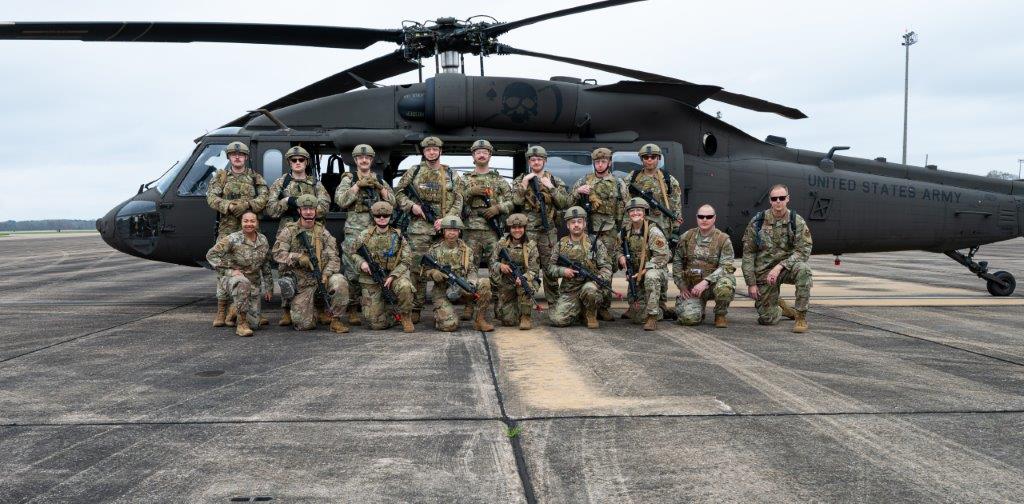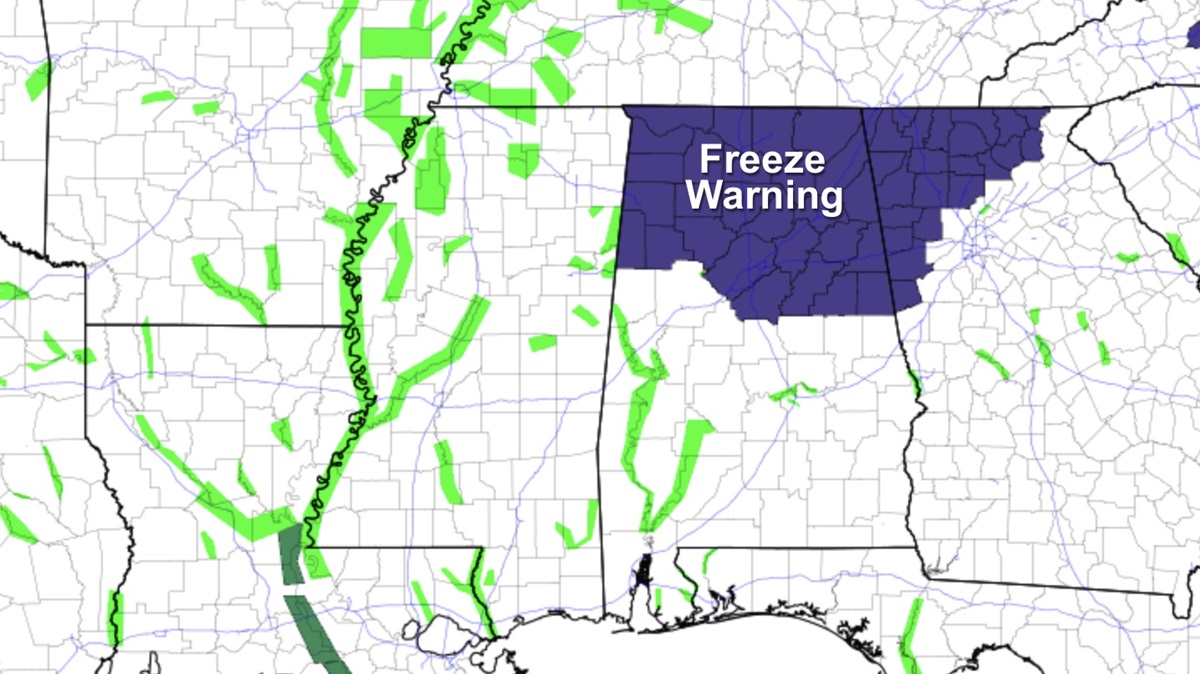Prey tell: Hunting with hawks in Alabama

Hunters brought their hawks and falcons to hunt in the Wilcox County woods last week. Falconry and hawking is an old sport that demands much dedication from its participants. (Robert DeWitt/Alabama NewsCenter)
John Ortino cranes his neck and runs his eyes over the bare limbs of the big hardwood. The squirrel is nowhere to be found. Ortino is hunting, but he doesn’t have a gun or archery equipment.
“Come on, Pep, get him, get him,” he calls to Pepe, his 2-and-one-half-year-old red-tailed hawk, as one of Ortino’s companions beats on the tree trunk with a heavy walking stick.
Falconry is a sport that dates back to ancient times. It was the favorite sport of nobility and royalty in medieval Europe. And it’s still practiced by a small group of dedicated hunters.
Pepe sits, nearly motionless, in another tree a few feet away, seemingly disinterested in what is going on around her. In a few minutes, she hops nonchalantly to the tree Ortino is watching. Pepe shows no signs of urgency before suddenly taking a short hop into a squirrel nest, talons down, wings spread. A buzz spreads through the men and women on the ground.
“She’s got him,” Ortino yells. But there’s confusion because no one can see the squirrel. A moment later, Pepe sails out of the tree, squirrel dangling from her talons, and lands about 100 yards away. The younger members of the party take off at a dead run toward her.
Hawk, falcon hunters enjoy centuries-old sport in Alabama woods from Alabama NewsCenter on Vimeo.
One hunt at Alabama Hawking Association’s annual meet ends successfully and another will soon begin. The organization teamed up with the North American Falconers Association, which made the event its Southeastern meet Feb. 23-25. Together, they brought 45 to 50 falconers and their entourages to Camden in Wilcox County for a weekend of hunting and socializing.
“We don’t do it for any kind of trophies or anything like that,” said Joe Ryan, president of the Alabama Hawking Association. “We just like being out with the birds, hunting, getting together in groups and seeing what the birds can do.”
A chess match
It is the second year in a row that the falconers have come to the small Black Belt town. The hunters enjoy the abundant small game, said Pam Swanner, director of Alabama Black Belt Adventures Association, a tourism group that promotes the region’s nature-based tourism. The townspeople appreciate the economic benefits from the influx of visitors.
Many people picture falconers riding on horseback, watching swift birds of prey pluck gamebirds from the air. Hunting with falcons can be somewhat like that stereotype. But hunting small game with red-tailed and Harris’s hawks is more of a cat-and-mouse game.
The Alabama hunt started with the same tactics sometimes used by hunters with guns. After Ortino, who is from Alabaster, released Pepe, the group with him walked through the woods south of Camden, pulling and shaking vines and beating on tree trunks hoping to spook game. They hadn’t walked 100 yards before a squirrel took off running down a big oak’s limb.
“The hawk is typically going to spot the squirrel before you do, and then she’s going to go over and start working the squirrel,” said Gary Brewer, a Texan with 38 years of falconry experience. “Then it’s a chess match. The squirrel will make its move and the bird will make its move until one of them loses.”
The hunters go into a frenzy, yelling for Pepe, but she is a deliberate, experienced hunter. She acts almost disinterested to a casual observer and doesn’t immediately dive at the squirrel. Instead, she makes a series of short flights, changing limbs for a better vantage point.
“She knew where the squirrel was,” Ortino said. “But being an experienced bird, she was picking her spot to go after the squirrel. When she was younger, she’d have gone right after it.”

Hawks carry their prey to the ground to eat it. The falconer must hurry before the hawk eats the squirrel. The falconer distracts it with meat while he takes the squirrel away. The bird will get its prize later, but the falconer has no control over his bird if it has a belly full of squirrel.
Pepe’s economy of movement is a product of experience, Ortino said. She is trying to expend the least amount of energy possible to catch her prey. For birds of prey in the wild, the harsh realities of survival dictate that tactic. Food equals survival, and the less energy expended in obtaining it, the better the chances for survival.
Becoming a falconer
Hawks and falcons aren’t tame and they aren’t pets. They have no emotional attachment to their owners. The falconers are nothing but food providers, and all the training revolves around food.
The hawks are trapped as juveniles and their training begins indoors with teaching them to sit on the heavy leather glove falconers wear for protection. Once the bird is calm enough to take meat from the falconer while sitting on the glove, the falconer moves the meat just out of reach so the bird must take a short step toward the falconer. The falconer gradually increases the distance the bird must travel to him.
Later the falconer will take the bird outside on a tether. When he believes the bird is trained to come to him, the falconer will release it for a free flight.
“That first free flight is the most nerve-wracking,” Ortino said. “There’s a good chance that bird is not going to come back to you.”
After free flights, the bird is taken into the woods to hunt. It’s important to get the bird on game quickly. It must connect hunting with eating or it won’t hunt.
Hawks only hunt when they are hungry. Falconers know at what weight their hawks are hungry enough to hunt, and the falconer restricts their food to keep them at that weight. But they don’t starve the bird, because it wouldn’t have enough energy to hunt. That means they must weigh their birds daily to know how much food to give them.
Falconers go through an extensive training program that requires them to tag along with a sponsor, an experienced falconer, for at least two years. If the sponsor approves, the trainee must pass a written test, build a facility and buy equipment for keeping a hawk. The facility and equipment must pass inspection by state or federal officials.
Once the initial phase is complete, the trainee can trap and train a bird and begin a two-year apprenticeship. At the end of the apprenticeship, the sponsor decides whether the apprentice can practice falconry. A successful apprentice then becomes a general falconer for five years and can later become a master falconer. The falconer’s level determines how many and what kind of birds he or she may keep.
“It’s a lifestyle, not a hobby,” Brewer said. “It’ll completely take over and consume your life. If you’re a family man, your whole family has to live with it. You have to plan your vacations around it. It’s not a shotgun you can hang on the wall at the end of the day.”










